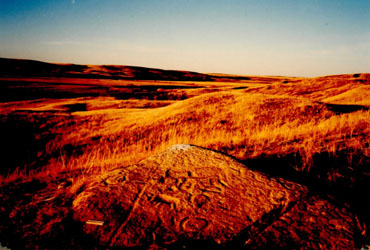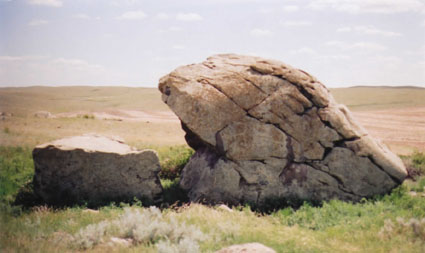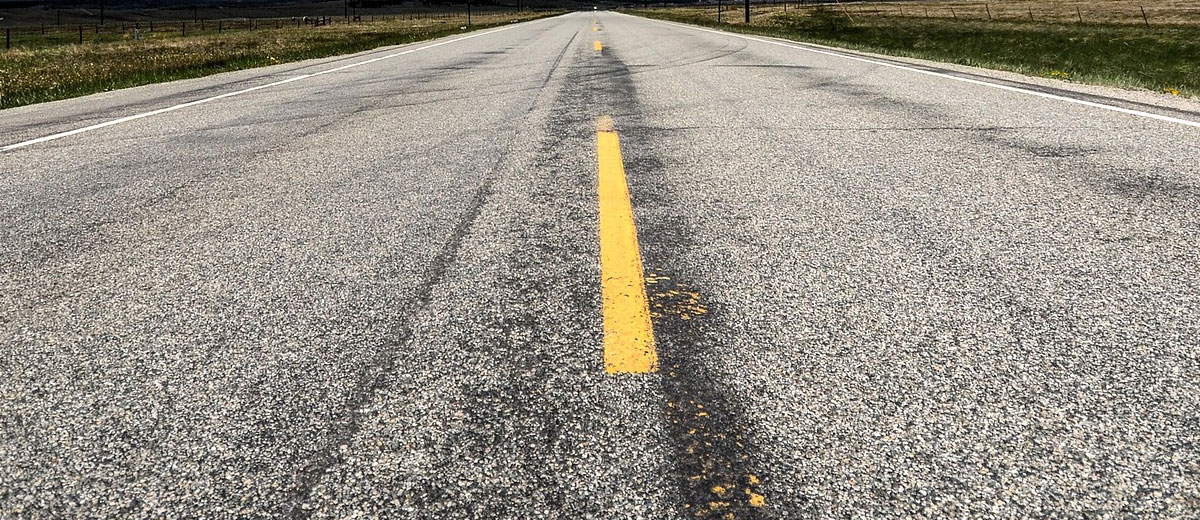
Have Your Heard of Saskatchewan Rock Art?
Canada is home to a vast array of rock art, encompassing petroglyphs, which are carved images, and pictographs, painted images on rocks. Saskatchewan, in particular, is rich in such sites, with significant excavations in the early 1990s uncovering two important Indigenous rock art locations in the southwestern part of the province: the Herschel Petroglyph Site, located 95 km southwest of Saskatoon, and the Swift Current Creek Site, situated just north of the Canada No. 1 highway near Swift Current.
The Herschel Petroglyph Site features a remarkable landscape overlooking Eagle Creek. It is distinguished by three large carved stones, several tipi rings, and a row of boulders stretching northward. The centerpiece, a dolomite boulder, showcases hundreds of carved pits on an east-facing panel. Excavations revealed artifacts and offerings at its base, including bison bones, stone flakes, and red ochre, indicating its long-standing sacred significance. This site, with elements traceable to the Avonlea Culture, also hints at a deeper history possibly dating back 9,000-10,000 years, linked to the ancient Pit and Groove Style of rock art.
The Swift Current Creek Rock Art Site is marked by a limestone boulder adorned with engravings and situated on a promontory overlooking the creek. The images, including a bison and various symbols, suggest the site’s use for ritual purposes. Excavations confirmed its connection to the Avonlea Culture. A radiocarbon date from the charcoal yielded a date of 1262 ± 95 BP. Notably, the site also features unique pre-contact black rock paintings, adding an unprecedented dimension to Canadian rock art research.
In Southeastern Saskatchewan, near Weyburn, the St. Victor Site has garnered attention for its extensive engravings. Due to vandalism threats, protective measures have been implemented, including a replica for educational purposes. Additionally, a site near Hazlet features red pigment handprints on a large erratic, and another engraving site near Cabri Lake offers distinct markings, though without archaeological remnants.
These discoveries underline the rich artistic heritage of pre-contact Indigenous peoples in southwestern Saskatchewan. However, these sites face challenges from natural erosion and human damage, highlighting the urgent need for preservation efforts. They represent a crucial part of North America’s earliest artistic traditions, potentially dating back over 18,000 years, and hold significant cultural and historical value for understanding the continent’s first inhabitants.

The standing rock at the Hazlet Petroglyph Site. This conspicuous landmark on a main trail known since the 1850s contains two red handprints beneath the overhang
Photo Credit: Jack Steinbring and the Canadian Encyclopedia








































